The port city of Nagasaki (長崎市) in the far west of Japan is among one of the country’s most enjoyable destinations. Yet many tourists choose to skip the city during their trip. And that’s a pity! The city may be less touristy, but you will still find some very special sights, Of course you can visit the Atomic Bomb Museum and the Peace Park. But don’t forget to discover the Dutch past in Dejima or take a walk in Glover Park and along the harbour. And finally, you can enjoy the views from Mount Inasayama.
Are you planning a visit to Nagasaki? In this travel guide, I will take you to the city’s best sights, discover the best accommodation and find out more about the special culture and history of this port city in western Japan. A history-rich visit to Nagasaki starts here….
This Travel Guide to Nagasaki contains affiliate links. This means that if you make a booking through one of the links on this website, Travel4history gets a small compensation for it. This does not cost you anything extra by the way!
In this Travel Guide to Nagasaki
Useful Websites Nagasaki & Japan
- Accommodation Nagasaki: Agoda, Booking
- Tours & Tickets: GetYourGuide Nagasaki
- Flight Tickets Japan: Jetradar
- Train Tickets: Japan Railway Pass
- Rental Car: Rental Cars
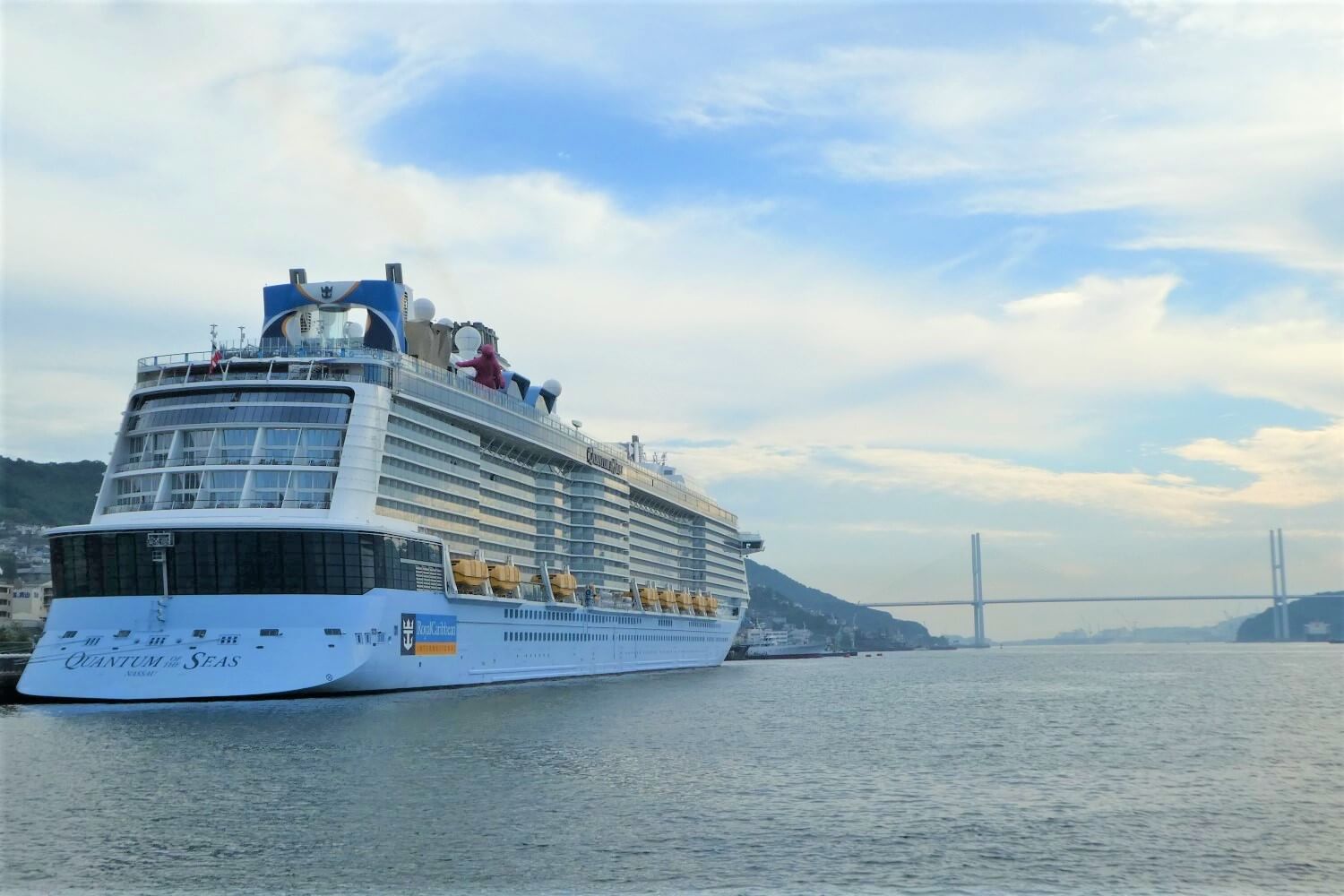
History – This is what you need to know about the history of Nagasaki
Before you visit Nagasaki, there are a few things you should know historically. The history of Nagasaki can be divided into three main events: the colonial influence of the Portuguese and the Dutch, industrialization in the 19th century, and the sad history of the atomic bomb.
When the Portuguese came ashore near Nagasaki in 1543 they aimed to accomplish two things in Japan: to trade and to spread Christianity. Especially the latter was against the wishes of those in power in Japan. On February 5, 1597, 26 Christian martyrs were crucified in the hope of suppressing the Roman Catholic faith in the country.
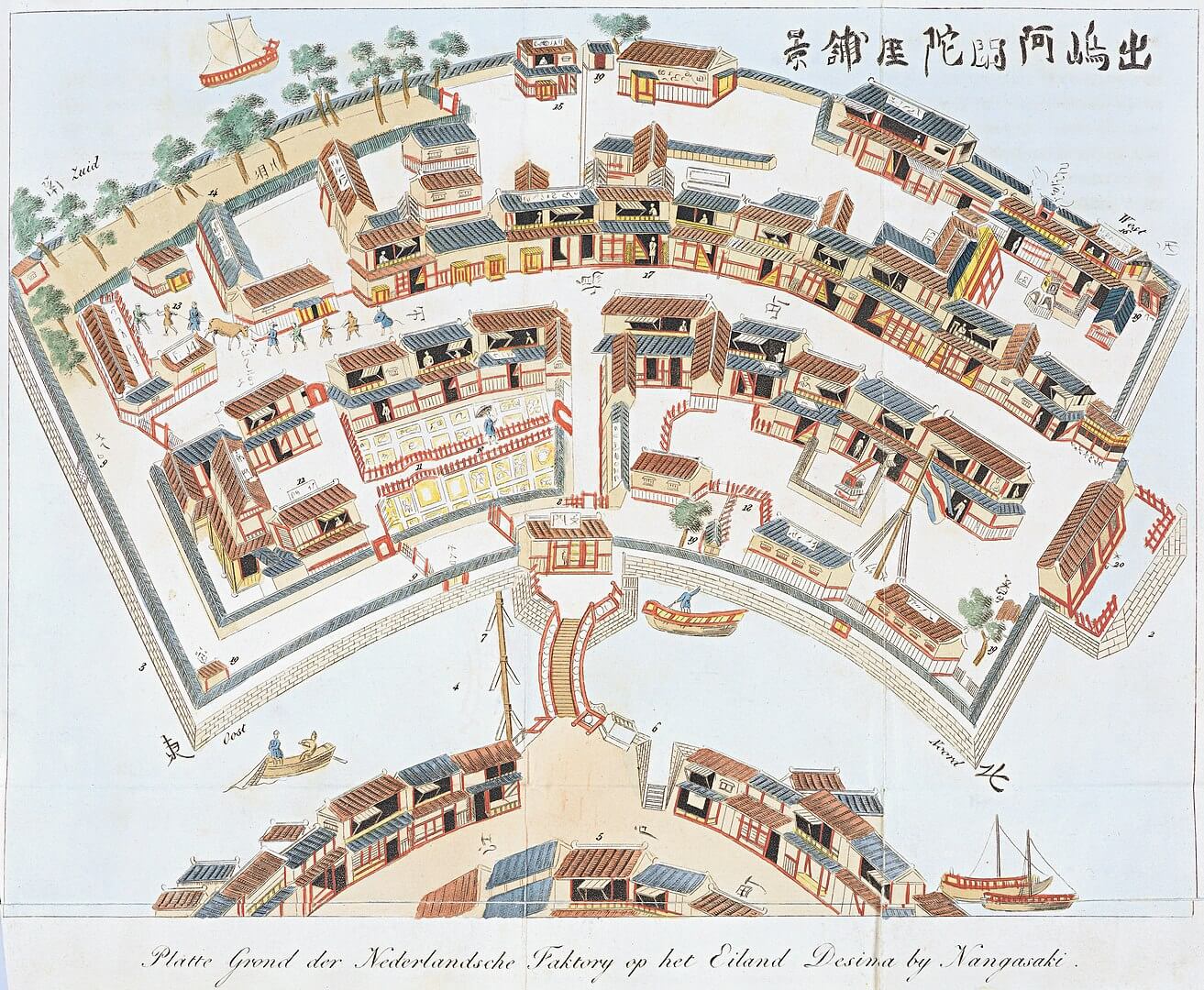
In addition, the Japanese received help from the Dutch to oust the Portuguese. When that succeeded, members of the VOC (Dutch East India Company ) were allowed to continue trading in Japan, as long as they did not spread the Christian faith. This was unique since Japan closed itself off from the rest of the world during the Edo period (1603-1868). The Dutch were assigned the island of Dejima in Nagasaki as a trading post. There they resided for more than 200 years.
When Emperor Meiji took power in 1868 he opened the country to Western powers. In 40 years Japan developed into one of the most modern countries in the world. In Nagasaki, it was Scotsman Thomas B. Glover (1838-1911) who played an important role in the industrial development of the city. Among other things, he founded the shipbuilding company Mitsubishi Group (now known for its cars) and the Japan Brewery Company (now Kirin beer).
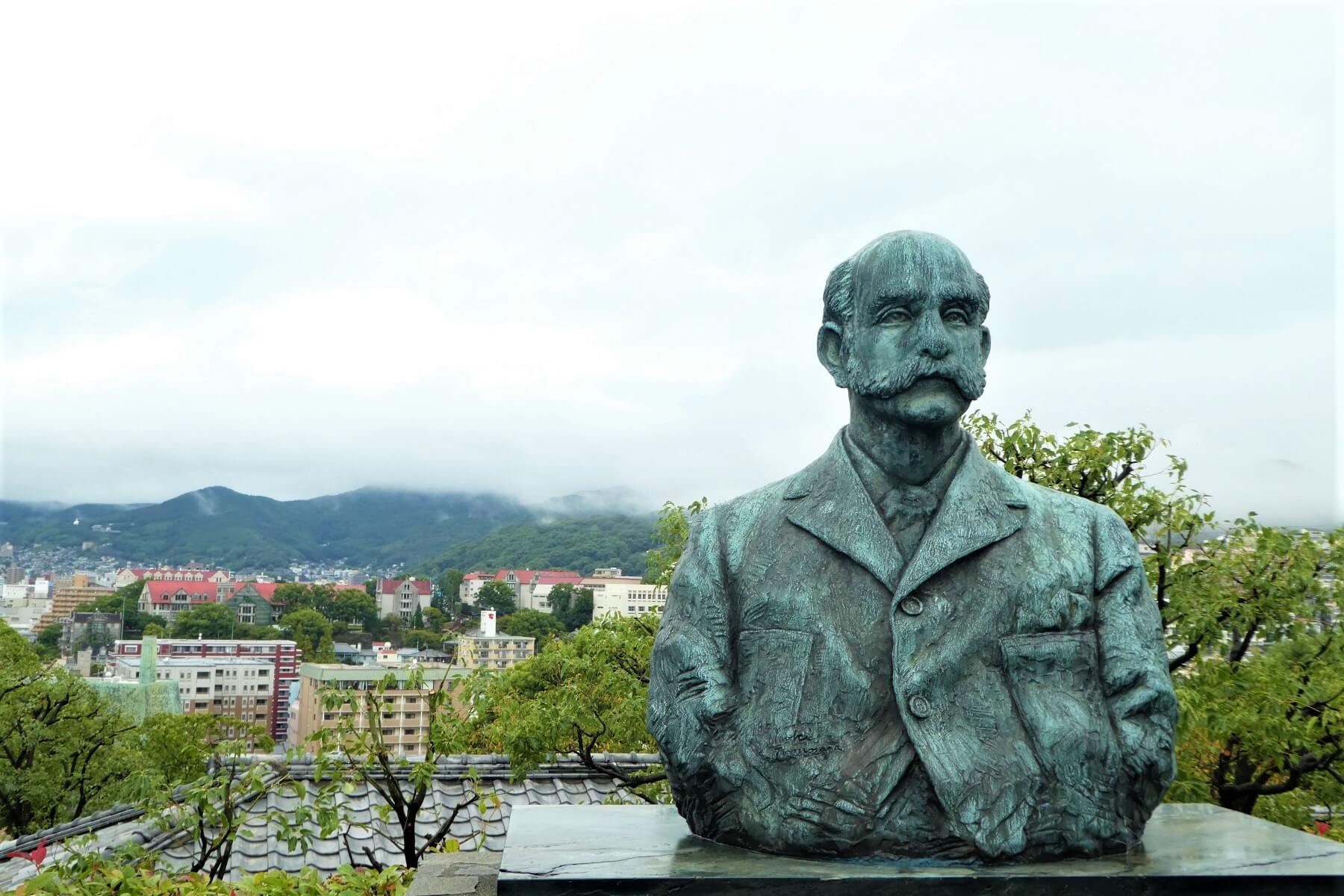
But Nagasaki is best known for that one event on August 9, 1945: the explosion of the atomic bomb Fat Man. Actually, the intention was to drop the bomb on the city of Kokura, but bad weather brought the Bockscar plane to Nagasaki. There the weather was no better and perhaps that resulted in the bomb landing on a suburb of the city. Even though Fat Man was more powerful and larger than Little Boy at Hiroshima, the death toll was less than in Hiroshima. The hills of Nagasaki prevented worse….
Within 10 years after the atomic bomb exploded, the port city of Nagasaki had been rebuilt. What remains now is a thriving city with interesting sights about the Dutch colonial past, industrialization in the 19th century and the memory of that catastrophic event on August 9, 1945. And you’ll read about that in the next chapter….
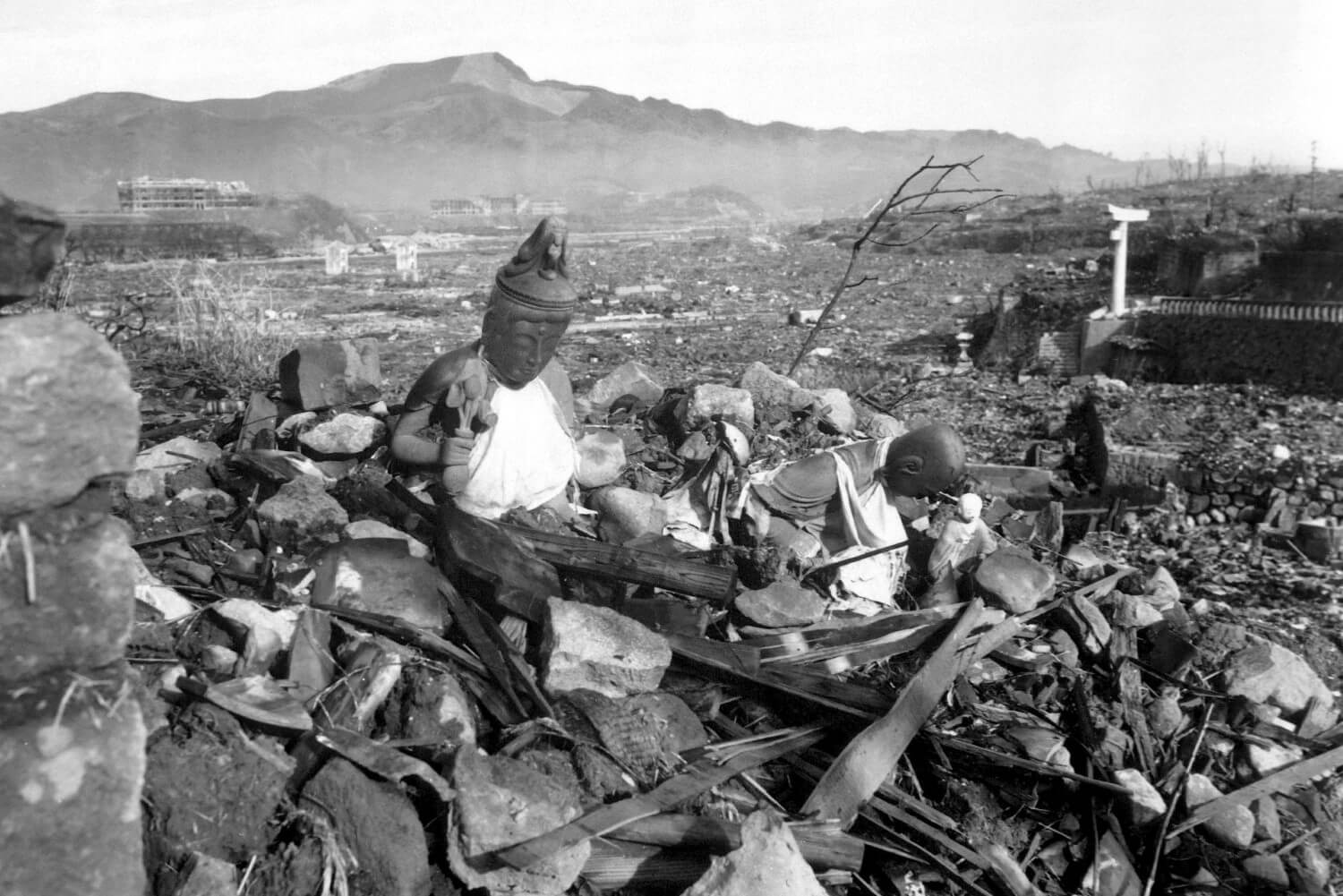
Sightseeing – What to do in Nagasaki?
Nagasaki is a special city with a number of interesting sights. How many days do you need to explore the city? To be honest, for the historical sites about the atomic bomb, I already spent a whole day. And for the other sights, it’s not just about what you can do in Nagasaki, but also in the surrounding area. But count on about 2 full days to have discovered the city somewhat well. Below is an overview of the main places.
Walk the Atomic Bomb Route
2 kilometers north of downtown Nagasaki are a number of interesting sites that recall the atomic bomb tragedy. First, take a look at the Atomic Bomb Museum to discover its history. Then continue the walk towards the Peace Park and the hypocenter, the exact spot where the atomic bomb was detonated 500 meters above the ground. Other places of interest include the Urakami Cathedral, the Takashi Nagai Museum, and the Shiritsu Shiroyama Elementary School.
Would you like to know more about this hike in Nagasaki? Then read the article The Atomic Bomb Route | 7 places that tell the story
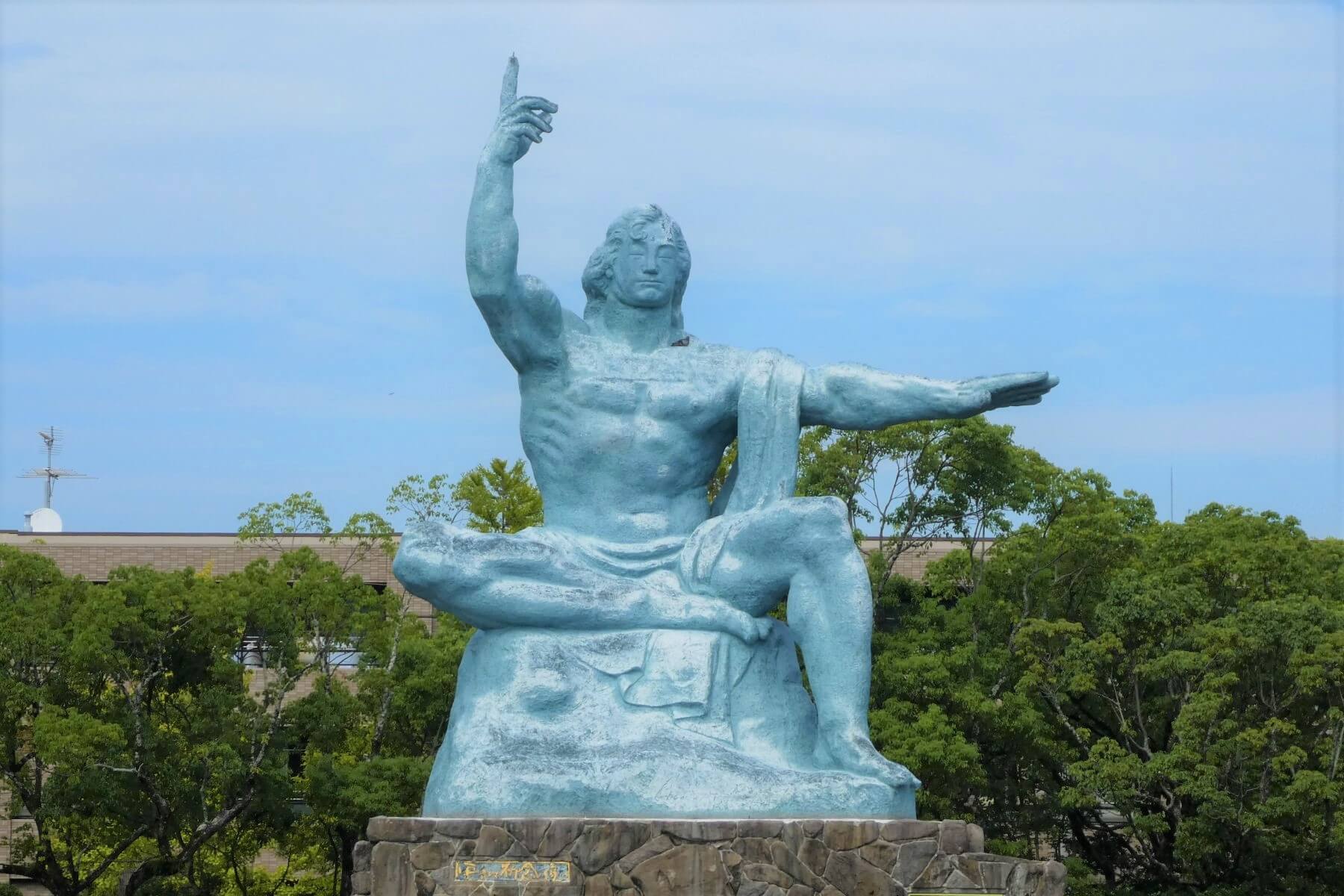
Visit a number of special museums
The Atomic Bomb Museum is an absolute must if you are in Nagasaki. Although it is similar to the Atomic Bomb Museum in Hiroshima, only this one is less touristy and mainly tells the story of the disaster in Nagasaki.
Another interesting museum is the Takashi Nagai Museum. Takashi Nagai was a radiologist at the city’s hospital and went in search of his wife and other victims just after the disaster. His wife did not survive the catastrophe, but because of his efforts, he became a local hero. He died in 1951 at the age of 43 from the effects of leukemia. Probably not because of the radiation from the atomic bomb, but due to his work as a radiologist.
Another interesting museum is the Museum of 26 Martyrs of Japan. This place tells the story of the 26 martyrs who were crucified in the city on February 5, 1597. The monument commemorating the victims is especially impressive.
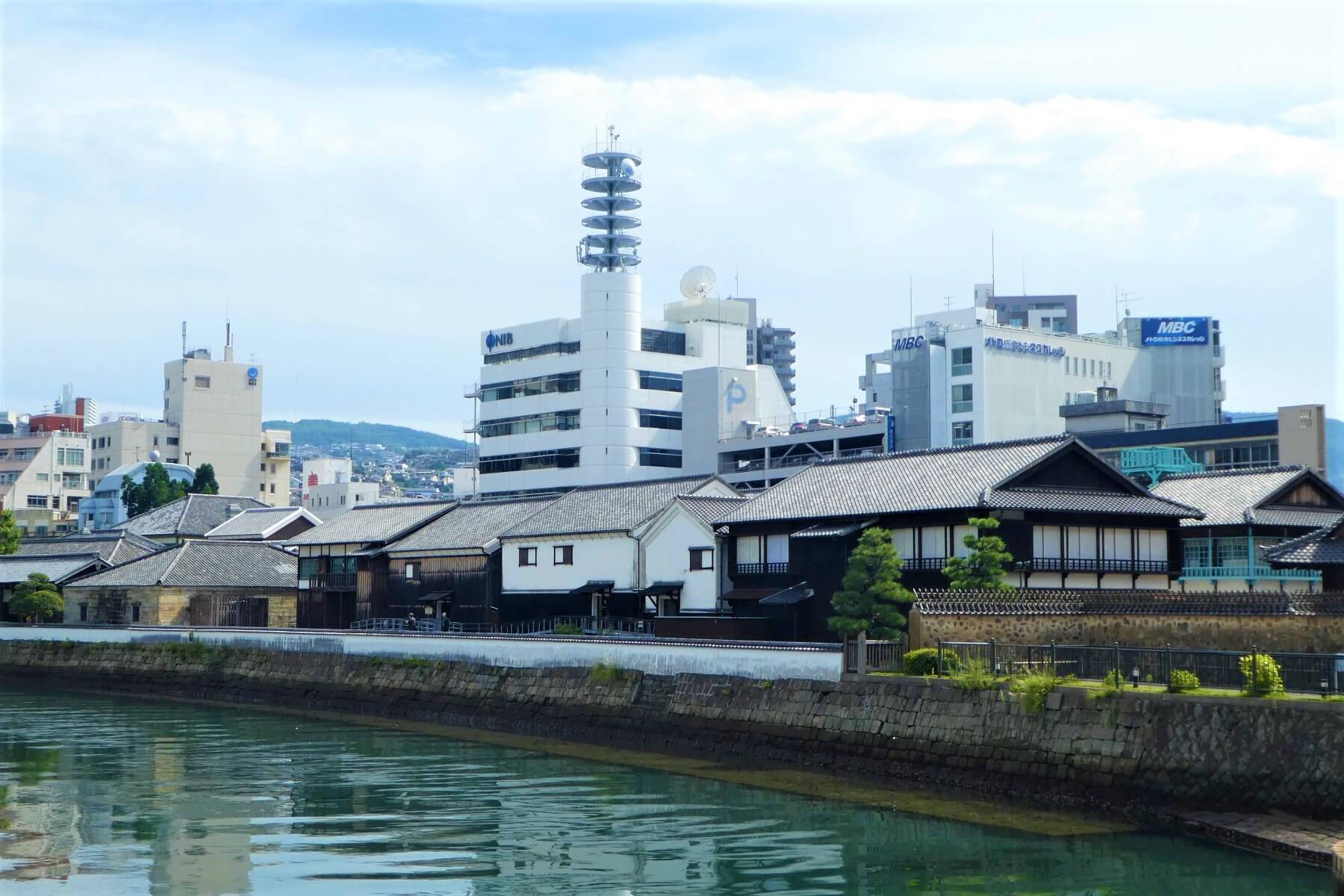
Discover the Dutch past in Japan
The Netherlands and Nagasaki have had a close relationship for almost more than 350 years. One of the sights that best explains this history is the islet of Dejima. For centuries this was the only gateway between isolated Japan and the rest of the world. Now it is a museum and you can discover how the Dutch lived on the island. Many of the historical buildings of the past you will not find here. In fact, almost everything has been reconstructed, but certainly interesting enough for a visit.
Would you like to know more about this Dutch island in Japan? Then read the article Dejima | Relive the Dutch past in Nagasaki.
Another interesting place with a Dutch twist is Dutch Slope. This is a historic street with a number of typical Dutch houses. It is located about 500 meters south of Dejima and is also called Hollander Slope.
If you walk from Dejima along the river towards the northeast of the city you will pass Megane Bashi. This is also called the Spectacle Bridge and is among the oldest in the city. The Chinese monk Mokusunyoujo built it in 1634. In clear water, it looks exactly like glasses. No Dutch past, but noteworthy….
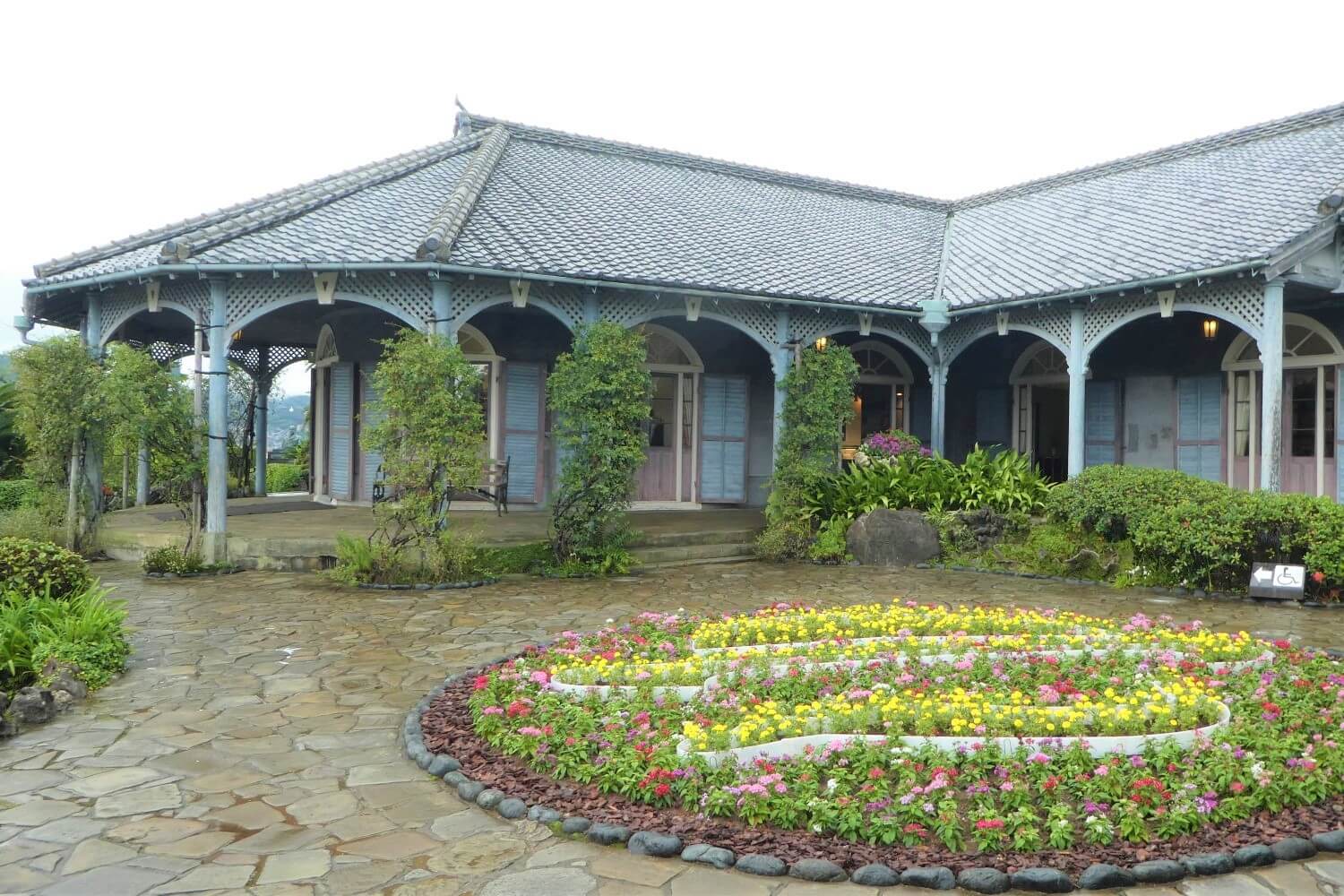
Visit Glover Garden
An attraction that you can easily combine with Dejima is Glover Garden. On this spot, Scotsman Thomas Blake Glover had his house built with a beautiful view of the city’s harbor. Today it is a museum that is also very popular among Japanese tourists. The park contains a number of homes of Western traders who influenced the industrialization of the country in the late 19th century. It is a nice place to spend 2 or 3 hours seeing.
Curious about this beautiful place in Nagasaki? Then read the article Glover Garden | Discover this beautiful estate in Japan.
Go to the historical island of Gunkanjima
This island is also called Hashima and is located 15 kilometers from Nagasaki. Today it is a ghost island, but from 1810 to 1974 coal was mined. At the peak of coal mining around 1960, 5,200 people lived here and it was one of the most densely populated places on earth. Since 2015 it has been on the Unesco World Heritage List and you can visit it with a tour. It is also better known as Battleship Island.
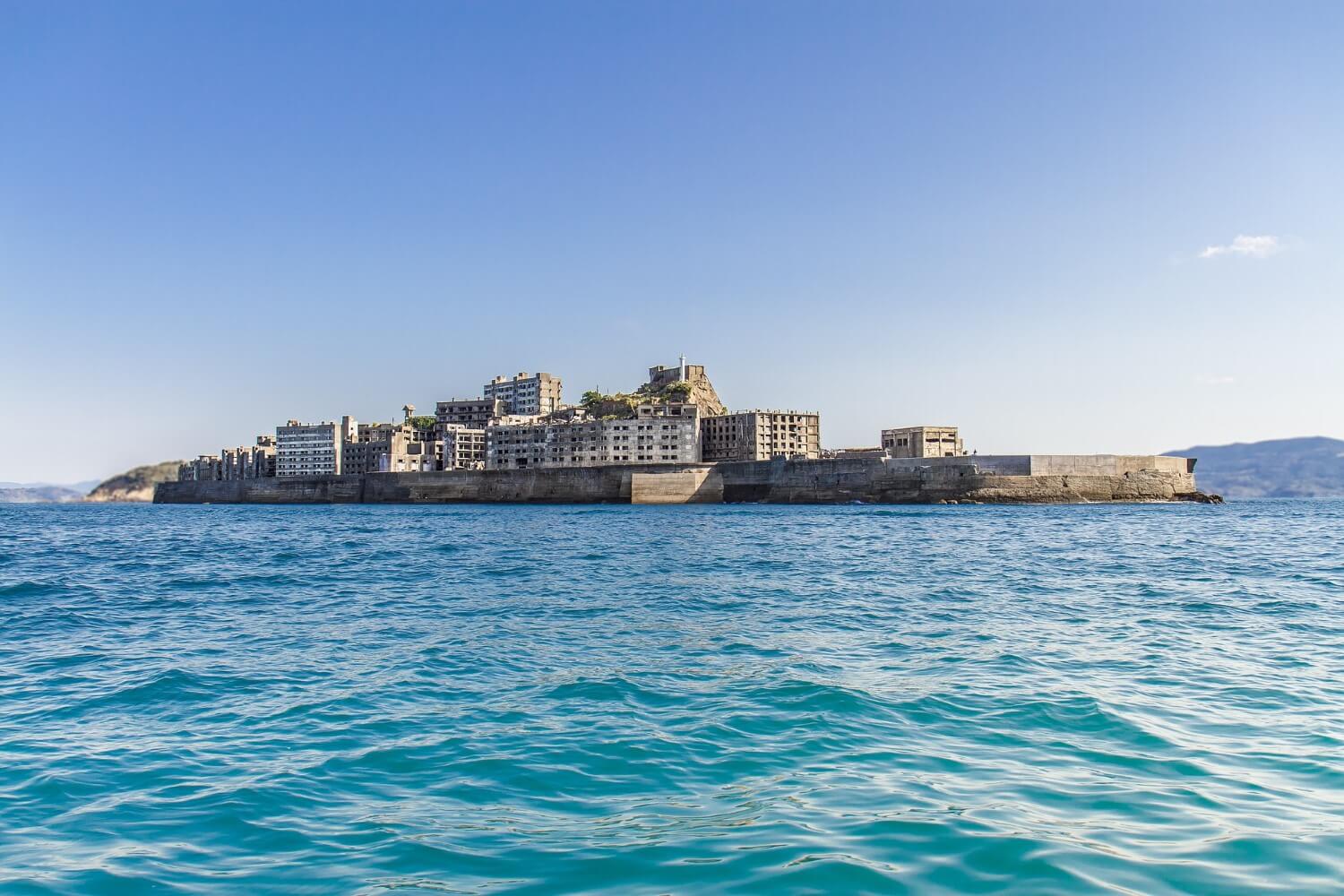
Huis ten Bosch: Discover small Holland in Japan
Want to discover even more Dutch influences? North of Nagasaki is a theme park called Huis ten Bosch. It is named after the well-known palace in The Hague, but the Japanese have turned it into the miniature Netherlands. Everywhere you walk you recognize famous Dutch buildings such as the Amsterdam canal houses, the Dom tower, and of course Huis ten Bosch. Bizarre, but super fun! Expect to spend at least half a day or a whole day visiting the park.
Want to know more about this fun theme park in Japan? Read the article Huis ten Bosch | Discover Little Holland in Japan
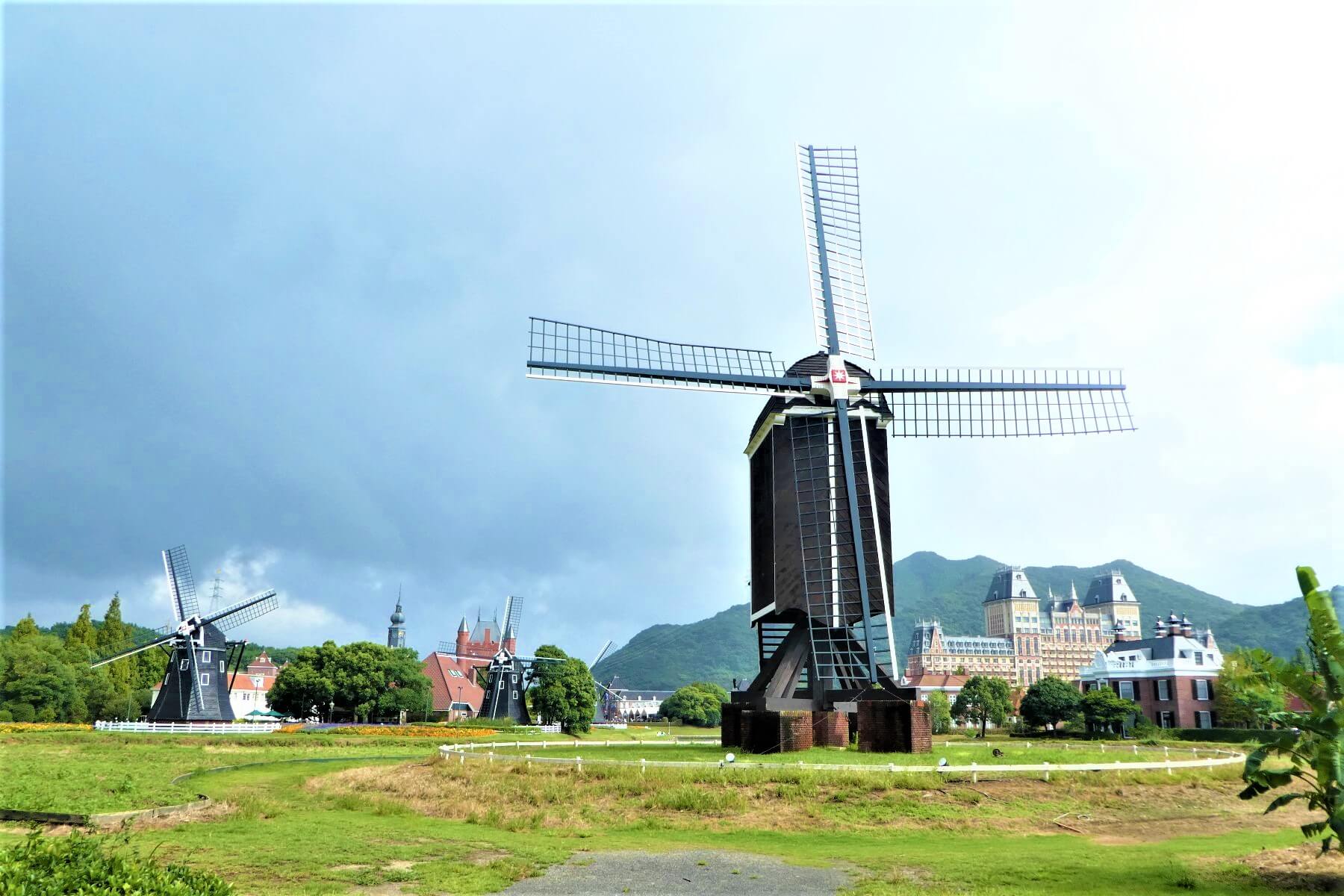
Mount Inasa: Enjoy the magnificent view of Nagasaki
Nagasaki is situated between the hills and what is the best place to enjoy a beautiful view of the city? Right, for that you go to Mount Inasa. With the Nagasaki Ropeway, you can reach the top within 10 minutes and there you can take a nice walk to the viewpoint or to Inasa-Yama park. There is little history to be discovered here, but the view of the city and the surrounding islands is truly magnificent.
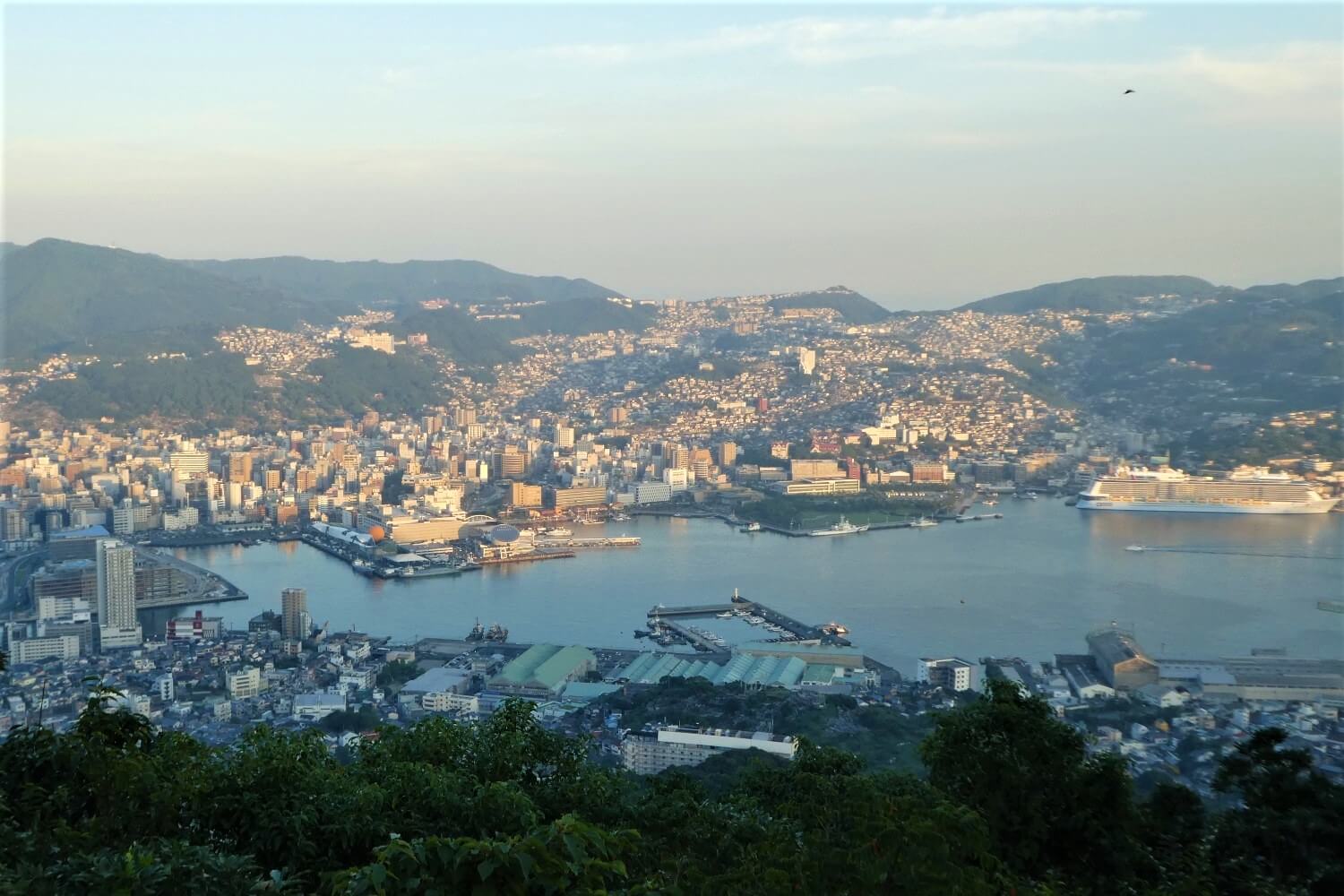
Accommodation – Where to stay in Nagasaki?
Are you looking for budget accommodation in Nagasaki? Then book a room at Hostel Casa Noda. This hostel is less than 400 meters walking distance from the city’s train station and the staff is extremely nice. Furthermore, the rooms are nice and spacious and there is a common area where you can meet people. Finally, it is located in the city center within walking distance of Dejima and Glover’s Garden. The center of the city, near the train station, is also the best location for accommodation. For the Atomic Bomb Museum and Peace Park, catch streetcars 1 and 3 heading north.
Check here for the best prices of Hostel Casa Noda or other great accommodation on Booking.
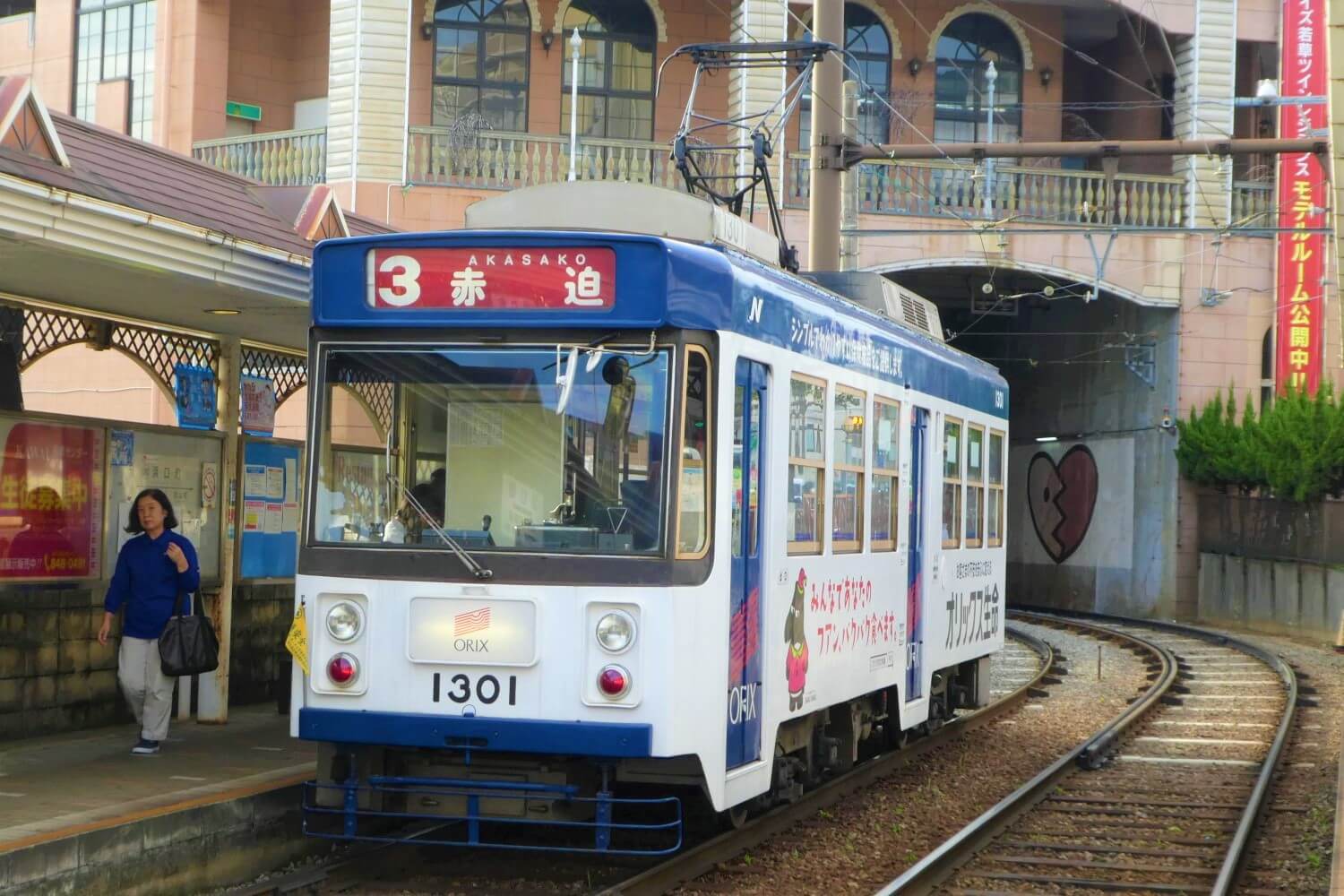
Transport – How to get to Nagasaki?
Nagasaki has an airport called Nagasaki Airport, but this is mainly used for domestic flights. If you are planning to travel from Tokyo to this port city, go by plane. The Shinkansen and partly the regular train will take at least 7 hours. For transport in the city, you can use the tram lines. It is easy to take a tram from Nagasaki’s main train station to the places where the atomic bomb exploded, 2 km north of the centre.
Will you be using the train a lot? Then purchase a Japan Railway Pass. This pass is valid for 1 week, 2 or 3 weeks and you can use the super fast Shinkansen (high-speed lines).
Next destination in Japan?
Are you ready for your next destination in Japan? From Nagasaki, I left for Fukuoka in the north. But if you have time, it is a good plan to discover the rest of the island Kyushu.
Do you have any tips and ideas for the Nagasaki Travel Guide? Please feel free to leave a message below.